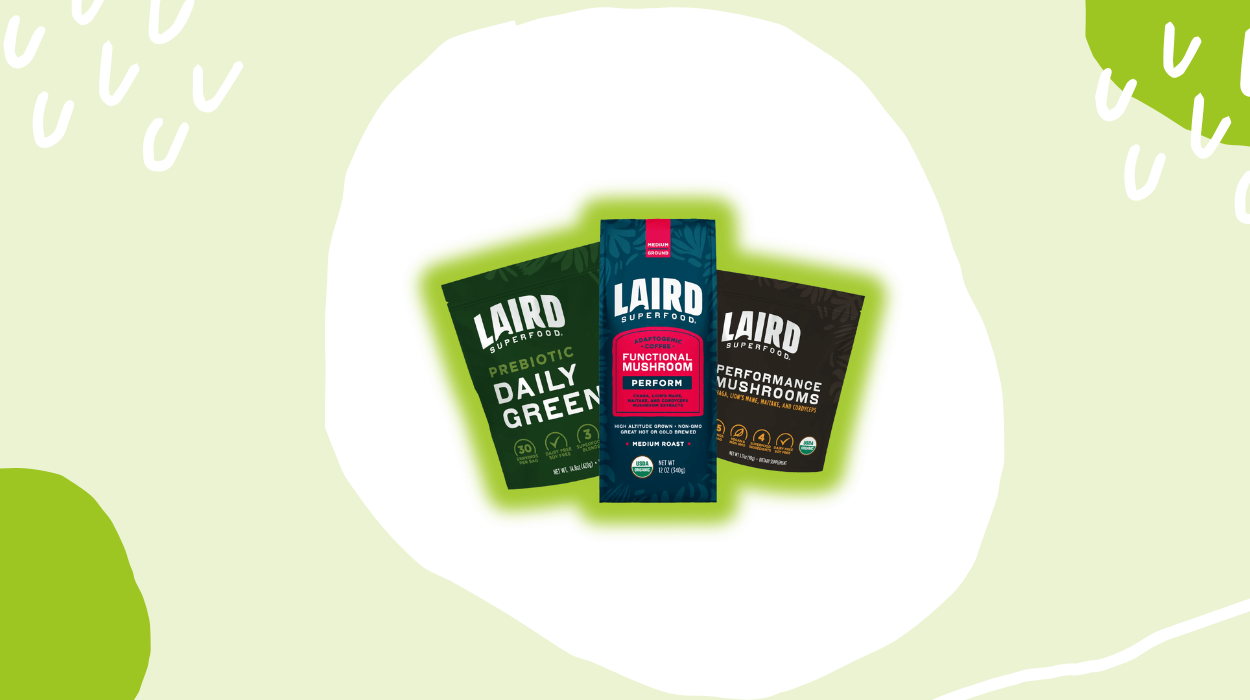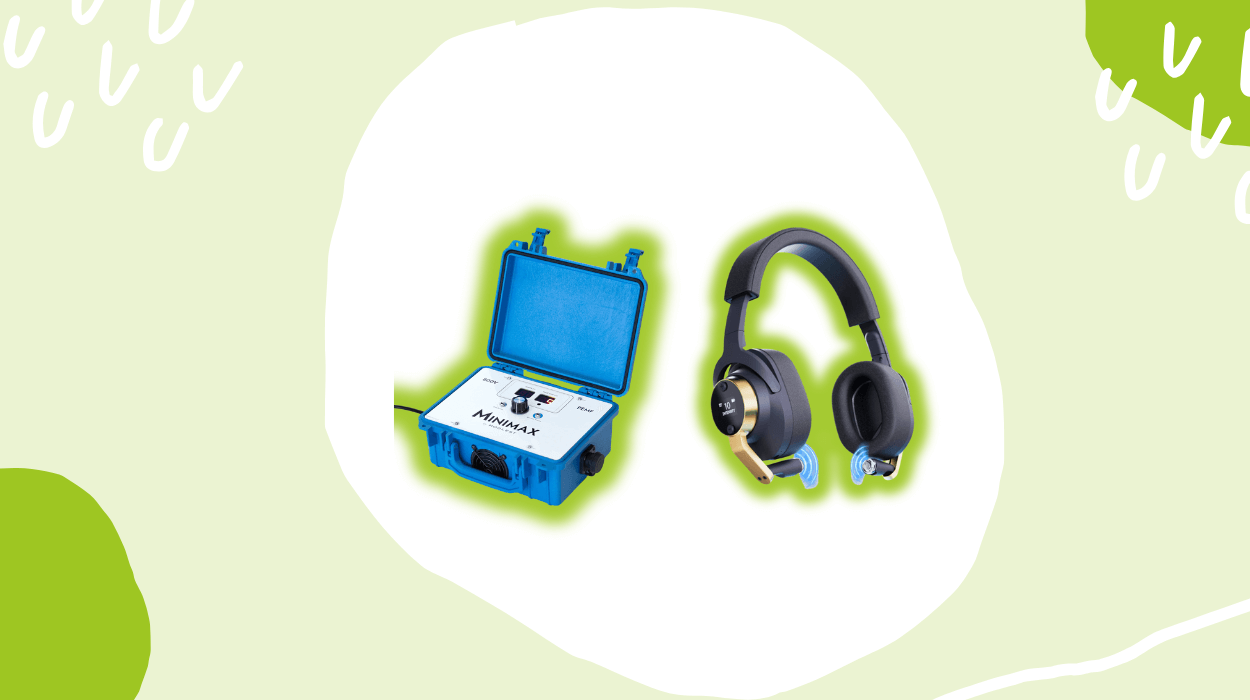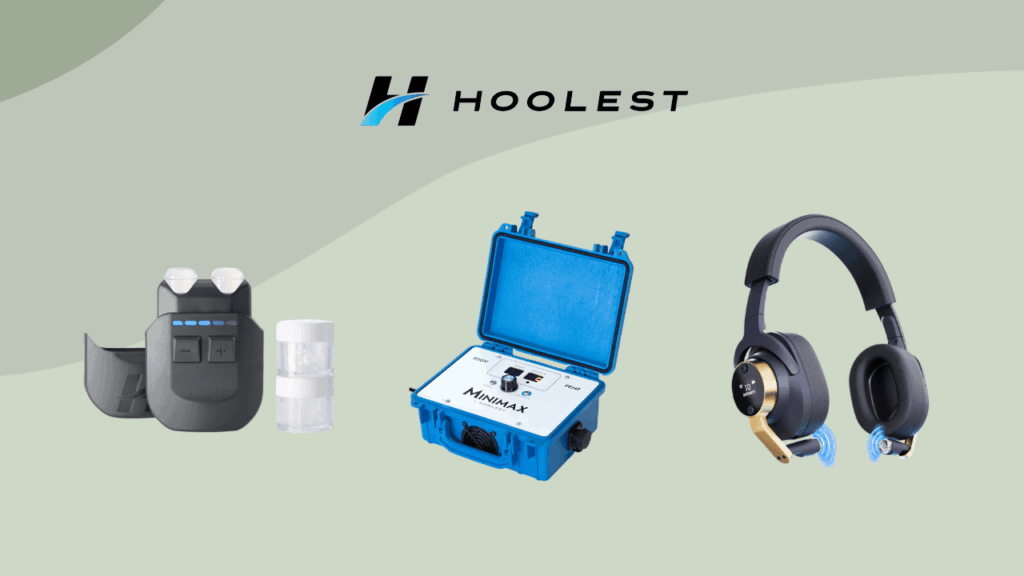

Hoolest is a wellness technology brand that focuses on neuromodulation technology, offering wearable devices that may stimulate the vagus nerve. Such stimulation may activate a specific part of your parasympathetic nervous system, which regulates anxiety and stress levels.
These devices could help calm an overactive nervous system, improve sleep quality, and lower anxiety levels. Beyond devices, the brand also offers accessories like gel tips, mini gel tips, and replacement gel holder covers.
In this review, we take a closer look at what the brand offers, including its background, range of VNS offerings, associated advantages, and potential brand limitations. The review also explores a balanced analysis of user experience, covering setup, comfort, and session effectiveness.
Founded in 2018 by Dr. Nicholas Hool, the Hoolest brand and its offerings are built on the concept of vagus nerve stimulation (VNS), which is positioned to help suppress feelings of panic, stress, and nervous system overactivity.
According to its official website, the brand’s lineup features handheld devices like VeRelief Prime, which is equipped with five preset modes and claims to deliver high-dose auricular stimulation to improve your body’s response against daily stressors.
Its lineup also provides a headphone-based VNS device with active noise cancellation and audio playback, called Hoolest Pro. The brand also offers the Mini Max PEMF, which is equipped with strong magnetic pulses that may help reach deeper branches of the vagus nerve for better stimulation.

VeRelief Prime is a handheld auricular vagus nerve stimulator, which may offer a non-invasive means for stress relief and recovery support from the body’s fight or flight response. The device uses patented high-dose hydrogel tip technology to deliver precise electrical stimulation to the vagus nerve located below your earlobe.
As per its official site, VeRelief Prime is equipped with 5 preset modes, including Worry, Sleep, Stress, Focus, and Panic. Each of these modes is set with specific stimulation frequencies that range from low to high intensity, which may align with different mental and physical states.
The device works through transcutaneous auricular vagus nerve stimulation, which provides electrical impulses to the vagus nerve through the ear region. It may stimulate the auricular branch of the vagus nerve with specific frequencies, such as 8 Hz for relaxation or 100 Hz for acute stress, which could help shift the nervous system from a sympathetic state to a parasympathetic rest and recovery mode. Such effects might lower cortisol (stress hormone) levels, improve heart rate variability, and maintain emotional resilience.
According to its official site, VeRelief Prime is certified to ISO 10993 skin sensitization and cytotoxicity safety standards, implying that the device may not irritate your skin or trigger harmful reactions when it comes into contact with your skin’s surface. Its design might support targeted relaxation in body areas like your shoulders, neck, or legs.
Hoolest Pro is a hybrid device that pairs studio-quality sound performance with advanced vagus nerve stimulation technology. It comes with an over-ear headphones design that could help provide gentle electrical stimulation to the auricular branch of the vagus nerve through contact points built into the ear pads. The dual-function approach may allow you to experience stress relief and relaxation benefits while listening to music, calls, or during meditation.
As per the official site, the headphones are equipped with 40mm dynamic graphene drivers, hybrid active noise cancellation up to minus 35 dB, and a transparency mode for environmental awareness. The device may offer up to 8 hours of nerve stimulation and 35 hours of music playback, with its rapid recharge feature restoring stimulation capacity in about 20 minutes. It comes with modular stimulators that are magnetically removable, which lets you use the stimulation feature independently or switch to standard headphone mode.
You may choose from multiple intensity levels through the built-in LCD provided with the headphones and adjust settings for comfort and duration. The ergonomic design, combined with protein leather ear pads and memory foam cushioning, may support long-term comfort for everyday use. As per the official site, it connects wirelessly through Bluetooth 5.3 and is certified under CE and FCC standards, indicating that it meets safety and performance expectations for daily use.
Mini Max PEMF is a high-intensity pulsed electromagnetic field system, which may support nervous system balance and recovery through deep stimulation of the vagus nerve and surrounding tissues.
According to its official site, it delivers electromagnetic pulses across a frequency range of 0.1 to 50 Hz and offers 100 discrete intensity levels for precise control. You may choose from timed or continuous operation modes, which might provide usage flexibility.
The Mini Max PEMF system weighs under 10 pounds (around 4.5 kg) and measures approximately 10 x 8 x 4.5 inches. It comes with a 19-by-60-inch mat coil and a 12-inch loop coil, providing both localized and full-body options for vagus nerve stimulation.
Mini Max PEMF works through pulsed electromagnetic field technology that generates oscillating magnetic waves capable of reaching deeper body tissues. These waves create small electrical currents at the cellular level, influencing ion exchange, mitochondrial activity, and cell signaling. Such effects may indirectly stimulate the vagus nerve through electromagnetic induction, which might help lower stress levels and promote a calm mental state. The device has a simple user interface, four preprogrammed settings, and four customizable modes to support different protocol requirements.
As per its official website, the device is equipped with a field intensity of over 0.4 Tesla (4000 gauss), whose electromagnetic waves may reach deeper tissues than standard PEMF systems.
The brand claims that its primary offerings, such as VeRelief Prime, Hoolest Pro, and Mini Max PEMF, are based on engineering methods grounded in neuromodulation research rather than general wellness ideas.
For instance, the VeRelief Prime is positioned as using a patented high-dose auricular vagus nerve stimulation system with dry gel tips that deliver controlled electrical micro pulses to nerve pathways near the ear.
The brand also highlights evidence tied to its patented stimulation patterns, noting that VeRelief Prime demonstrated notable reductions in state anxiety and increases in heart rate variability during placebo-controlled clinical evaluations.
The brand further explains that its patented stimulation design features higher power output while remaining within safe limits. It may help distinguish the brand’s VNS devices from general relaxation products that do not operate on studied biological mechanisms.
For example, the Pro device pairs bilateral vagus nerve stimulation with audio-supported calming routines, reflecting findings on how multisensory inputs help influence mood and stress signals.
Hoolest describes these technologies with diagrams and simple scientific terms that outline how electrical pulses or electromagnetic fields may interact with nerve fibers rather than surface tissue. Such a research-driven engineering approach may be helpful if you prefer VNS offerings that function on clinically backed technologies rather than theoretical claims.
The brand positions its VNS devices like the Hoolest Pro, Mini Max PEMF, and VeRelief Prime as non-invasive options to calm the nervous system, lower stress levels, and support recovery. However, these claims are based largely on general research about vagus nerve stimulation and PEMF, not on clinical studies done specifically on the brand’s devices.
It is important to note that the brand does not offer independent peer-reviewed trials, detailed safety data, or controlled studies to demonstrate how its devices perform in addressing concerns like anxiety, sleep disruptions, or increased stress levels.
Although the brand references in-house trials that reflect changes in stress levels or heart rate variability, these points are not backed by independent clinical evidence tied directly to its VNS devices.
As the brand’s VNS offerings fall under wellness products and are not FDA-approved medical devices, they are not required to follow the research standards expected in clinical settings. This means you are left to rely more on your personal experience and the brand’s descriptions instead of established scientific proof.
When comparing the brands Pulsetto and Hoolest, both operate in the non-invasive VNS devices segment, providing a means to calm an overactive nervous system while supporting relaxation benefits. However, the brands have some differences in terms of their origins and background, core positioning, accessibility, and pricing structures.
As per its official website, Pulsetto is a Lithuania-based wellness technology startup founded by Povilas Sabaliauskas and Vitalijus Majorovas.
The brand focuses on VNS and neuromodulation technologies, which also reflect a European design mindset that emphasizes daily usability and portability.
Meanwhile, Hoolest is a U.S.-based wellness technology brand established in 2018 by Dr. Nicholas Hool. The brand emphasizes its focus on providing wearable neuromodulation devices, which are backed by a patented high-dose VNS technology.
Such devices are positioned to target the auricular branch of the vagus nerve, which could stimulate the specific areas of the parasympathetic nervous system that influence stress responses and emotional resilience.
In terms of core offerings, Pulsetto’s brand catalog remains focused on two wearable VNS devices that are engineered to stimulate the vagus nerve for calmness by delivering ultra-low radio frequency energy to targeted areas.
Among its offerings is the Pulsetto Lite model, which has basic VNS functionality, a compact and adjustable design to provide a comfortable wear, and integration with a dedicated app ecosystem for guided use.
The brand also offers a Pulsetto Fit model that features up to 12 days of battery life, wireless operation support, and added padding to promote a secure fit across different neck sizes. Beyond devices, the brand also provides a Conductive Gel Box that features four 60g gel tubes. These gels are intended for application either on your neck or to the device's pulse points before sessions to maintain electrical conduction and contact.
On the other hand, Hoolest’s catalog features a hands-free VNS model called Hoolest Pro, which features active noise cancellation and pairs a studio-quality sound experience with neuromodulation technology.
The brand further offers the VeRelief Prime device that comes with a durable and compact build, five preset usage modes, and two pairs of gel tips. Its lineup also includes the Mini Max PEMF, which is positioned to offer deeper vagus nerve stimulation through emission of strong electromagnetic pulses up to 4000 gauss to support both targeted and full body coverage.
Warranty coverage and accessibility also indicate points of difference between the brands. According to its official website, all VNS devices from Pulsetto are backed by a standard 2-year warranty that can cover any defects in material or workmanship. For added assurance, the brand also gives an option to pay for an optional extension of 2 extra years of warranty over the standard one.
Meanwhile, Hoolest’s warranty policy offers device-specific coverage that varies by product type and whether a subscription or membership is active. For instance, the VeRelief Prime and Pro devices are covered by a one-year warranty period, while a two-year warranty covers the Mini Max PEMF device.
However, the warranty covers any manufacturing defects that are reflected during normal, intended use within the qualifying period. The coverage does not apply in cases of device misuse, unauthorized repairs, cosmetic wear, liquid damage, or issues caused by your actions. Moreover, the brand also provides access to the Hoolest Care Plan, an annual membership program that extends a lifetime warranty to up to three devices, including the Pro, Mini, Prime, and Reset models.
Both Truvaga and Hoolest focus on neuromodulation technology, offering VNS devices that are positioned to support calmness, improve sleep quality, and lower anxiety.
While the brands share common goals, they differ in multiple aspects, including their origins and messaging, range of offerings, emphasis on technologies, and warranty coverage.
Founded by JP Errico and developed by electroCore, Inc., Truvaga’s offerings emphasize the use of transcutaneous vagus nerve stimulation. Its VNS devices work by delivering mild electrical pulses to the skin over the vagus nerve. These low-level impulses may activate the parts of your parasympathetic nervous system that influence stress responses and anxiety.
Hoolest was established in 2018 by Nicholas Hool (a biomedical engineer) and follows a broader development path. As per its official site, the brand’s offerings utilize patented high-dose VNS technology, which emits low-frequency electrical pulses that are delivered through small electrodes placed beneath the ear. The pulses may stimulate the auricular branch of the vagus nerve. Such an approach may contribute to the multiple device variations made available by the brand, which cover different intensity levels and use cases.
In terms of product variety, Truvaga keeps its offerings centered on two core devices, reflecting a more focused product lineup. As per the brand’s official site, its lineup features the Truvaga 350 model, marketed to offer around 350 VNS sessions, and the Plus model, which supports unlimited use sessions and connects to an app-based ecosystem.
On the other hand, Hoolest’s lineup includes multiple VNS device models. For instance, it offers the compact VeRelief Prime device that comes with 5 usage modes and two pairs of gel tips. The Hoolest Pro is a hands-free model that features Bluetooth compatibility and noise cancellation, although it remains in the pre-booking stage. For more comprehensive support, the brand offers Mini Max PEMF, which delivers strong electromagnetic pulses up to 4000 gauss intended to reach the full length of the vagus nerve, providing more in-depth stimulation.
Warranty structure is another area where the brands diverge. For instance, Truvaga provides a limited out-of-box warranty that covers material defects and focuses on refund, replacement, or repair for eligible issues. The coverage excludes concerns related to normal wear and tear, misuse, unauthorized repairs, or external damage.
On the other hand, Hoolest uses a tiered warranty system. The VeRelief Prime carries one-year coverage, while refurbished versions include a 90-day limited warranty. The brand also offers the Hoolest Care Plan, an annual membership that extends a lifetime warranty to up to three devices, including the Pro, Prime, Reset, and Mini models. However, the plan only covers qualifying defects in materials or workmanship.
In evaluating Hoolest through the perspective of verified user feedback, we analyzed the authentic consumer experiences shared on Reddit. The feedback reflects a mixed and often divided response to the brand and its offerings.
For instance, one user who used the Pro device weekly for three months described clear improvements in calming the sympathetic response and even a reduction in CPTSD-related symptoms. Many users highlighted the comfort of the electrode placement and the ease of the headphone design, which supported a more stable usage experience during sessions.
Meanwhile, a few users questioned the device’s design and its placement below the ear, noting that it differs from more traditional auricular stimulation methods. Other shared concerns included the Pro model’s sound quality, which a user described as unsatisfactory when compared to a basic $30 headset.
Based on these user experiences, the brand’s offerings appear to have provided some meaningful relaxation benefits to some consumers. However, the unfavorable feedback around sound quality, pricing, and reliability reinforces the need to consider realistic expectations when using the brand’s VNS offerings.
As part of our evaluation, we assessed the credibility of Hoolest based on its background and presence across independent review forums. Operating since 2018, the brand positions itself around noninvasive VNS-based devices, which may help support stress regulation. To assess credibility further, we looked at third-party platforms that offer insight into the user experiences and business reliability of the brand.
On Trustpilot, the brand holds a 3.2 out of 5 rating from a very limited number of reviews shared between 2024 and 2025. Recent feedback emphasizes responsive and helpful customer service, while earlier reviews noted concerns around the short battery life of devices, occasional shipping delays, and electrodes drying out quickly.
The Better Business Bureau listing adds another layer, where the brand has an “A+” rating and notes more than seven years of operation, which may point toward consistent business practices and regulatory adherence within its niche.
We also considered TenereTeam, where the brand maintains a 4.5 out of 5 score, which is based on a limited number of reviews. Most reviews highlight ease of use with devices and supportive customer support interactions. Our evaluation suggests that the brand indicates a favorable level of operational stability but also displays variability in product feedback and order fulfillment.
Hoolest focuses on non-invasive neuromodulation technologies, including vagus nerve stimulation and PEMF. Its offerings provide the option for adjusting fit and stimulation intensity, come with basic usage and maintenance guidance, and are based on patented technologies.
The brand states its offerings feature patented high-dose hydrogel tip technology to provide consistent stimulation and lower stress levels. However, these claims rely on scientific research on vagus nerve stimulation rather than independent clinical studies conducted on its own devices. There are no peer-reviewed safety or performance data that confirm the outcomes described by the brand.
Considering these factors, it is also essential to assess factors like your budget, intended use, and lack of independent scientific evidence on the devices, which might help you decide if the brand’s offerings can meet your expectations.
Contact us at [email protected] or follow @leafsnap on Twitter! View our Privacy Policy.